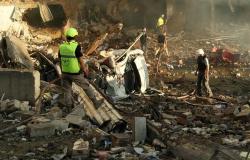From 2022 to 2023, the annual average of CO2 in the atmosphere on the surface of the globe increased by 2.3ppm, according to the World Meteorological Organization (WMO). This is the twelfth consecutive year where the increase is greater than 2ppm, which confirms an already significant trend. Especially since the intra-annual increase in CO2 is also confirmed.
It is evident that CO2 is accumulating in the atmosphere faster than at any time in human existence, since the current level of CO2 in the atmosphere is already 51% higher than in the pre-industrial era (before 1750).
The latest WMO Bulletin on Greenhouse Gases informs us that this significant increase in CO2 over a decade can be explained by the historical importance of CO2 emissions from fossil fuels between the years 2010 and 2020. Indeed, data from Earth System Science Data 2023 relating to the Global Carbon Budget in 2023 estimates that global carbon emissions from fossil fuels in 2023 were 10.0±0.5 Pg C year-1, or approximately 37. Pg CO2 yr-1, a significant increase from 3.0±0.2 Pg C yr-1 in the 1960s.
Furthermore, from 2010 to 2024, the international disaster database EM-DATA recorded 2,320 natural disasters of climatic and meteorological origin in the four corners of the world, reaching the peak of 371 disasters recorded in 2021, including floods, storms , drought and extreme drought.
Financing: the stumbling block of COP29
As this is a “financing COP”, it would be wise to concentrate during this 29th Conference of the Parties exercise on assessing climate change financing, and establishing a new financial target.
The last such target was set in 2009, when high-income countries said they would mobilize $100 billion in annual climate finance for low- and middle-income countries by 2020. A target that ‘they reached two years later.
It is important in this context to emphasize that funds allocated to climate change mitigation are generally the most important. Indeed, according to the OECD, developed countries have mobilized around $30 billion per year for mitigation in developing countries. Whereas, funding for adaptation is often lower than that dedicated to mitigation, although it has increased in recent years. According to a 2023 World Bank report, financial flows for adaptation represent approximately $10 billion to $15 billion per year in developing countries, at a time when financial needs for adaptation are much higher, and estimated at around $70 billion per year in 2020.
Why this distortion? Quite simply because mitigation has a potential for higher direct financial returns in the long term, and requires significant initial investments. However, the financial returns from adaptation are more difficult to quantify in the short term, despite their considerable social and economic returns in terms of food security, public health, and the resilience of vulnerable communities.
Especially since AFOLU (agriculture, forestry and other land uses), a critical sector which presents considerable vulnerability and very extensive adaptation needs, only received $7 billion, which represents only 11% of all funding dedicated to adaptation.
All in all, although this distortion exists, the question that remains important for this Conference is whether the contribution objective that will be set there will be at the level of the expectations and estimates of the UN models. Which suggest that the contribution target in 2025 should be $0.89 trillion in 2025 and increase to $1.46 trillion by the fifth year of implementation.
From quantitative “NCQG” to qualitative “NCQG”?!
Beyond the quantitative aspect of the “New Collective Quantified Goal-NCQG”, the qualitative dimension is also serious. According to analyzes by the Climate Policy Initiative, the ten countries most affected by climate change between 2000 and 2019 received only $23 billion, or less than 2% of total funding to combat climate change.






